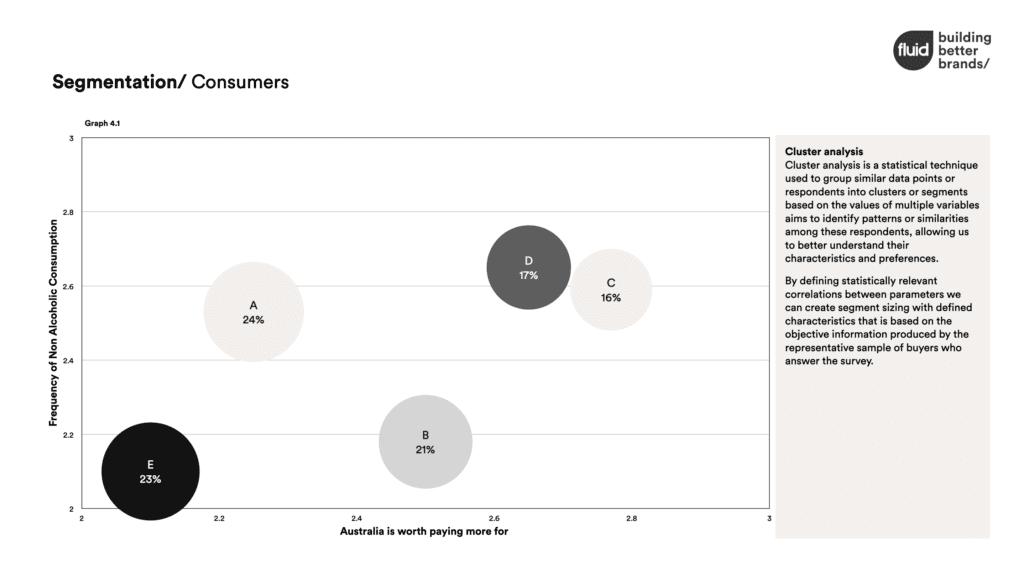Target market segmentation: Attitudinal Segmentation with GWi global survey data.
Segmentation isn’t just about demographics. It never really has been. Grouping people into broad Millenial, Gen Z and Boomer lumps does a disservice to buyers. Instead good marketers should seek to understand what drives customers – their attitudes, memories and habits. Enter attitudinal segmentation – a potent tool to decode the intricate world of consumer behaviour.
Attitudinal segmentation peels back the layers, uncovering the core behaviours and attitudes that drive consumer purchasing decisions. Agencies like Fluid Branding can offer clients sophisticated techniques like cluster analysis, not just to group customers, but to unveil the collective mindset of specific segments.
Attitudinal segmentation focuses on grouping customers based on shared attributes. This approach is essential because even individuals who appear similar in terms of demographics and behaviour may hold different attitudes and habits. By understanding them better, we can craft communications and messaging that are more persuasive and effective.
To form attitudinal segments, Fluid employs advanced analytical techniques such as cluster analysis. This statistical method groups similar data points or respondents into clusters or segments based on the values of multiple variables.

By leveraging this data-driven approach, Fluid doesn’t just guess about what might work; they base their insights on statistically relevant correlations drawn from comprehensive surveys. This equips their clients to craft messaging and strategies that truly resonate, moving beyond generic platitudes to create tailored, impactful brands.
Large groups of the population are unlikely to agree on numerous attitudes or opinions. Therefore, we utilise factor analysis to uncover the underlying attitudes that exist within lists of Likert scale statements. In this way segmentation is based on objective information gathered from a representative samples of buyers who answer the survey. By defining statistically relevant correlations between parameters, Fluid can create segment sizing with defined characteristics and build in-depth audience personas that are easy to connect with.

GWi data provides a level of depth and density that is unobtainable by most marketers without paying huge fees. Fluid offers clients an affordable way to draw insights from segments, so they can better tailor their branding strategies and ultimately achieve measurable improvements to their bottom line.
Say goodbye to the one-size-fits-all approach and embrace Fluid Branding’s Attitudinal Segmentation with GWi global survey data.